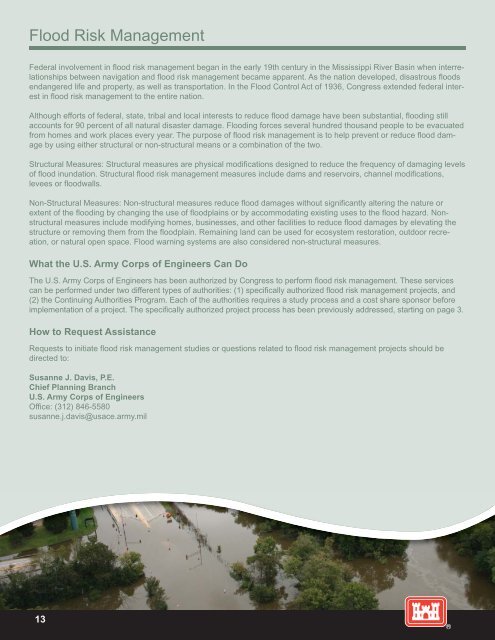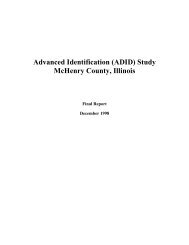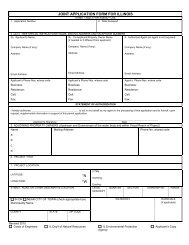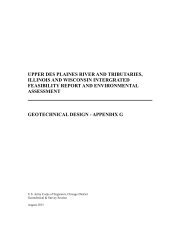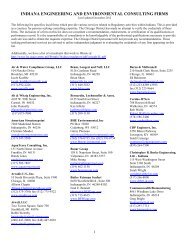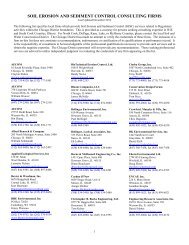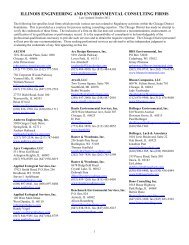Civil Works Policy Guidebook.indd - Chicago District - U.S. Army
Civil Works Policy Guidebook.indd - Chicago District - U.S. Army
Civil Works Policy Guidebook.indd - Chicago District - U.S. Army
Create successful ePaper yourself
Turn your PDF publications into a flip-book with our unique Google optimized e-Paper software.
Flood Risk Management<br />
Federal involvement in flood risk management began in the early 19th century in the Mississippi River Basin when interrelationships<br />
between navigation and flood risk management became apparent. As the nation developed, disastrous floods<br />
endangered life and property, as well as transportation. In the Flood Control Act of 1936, Congress extended federal interest<br />
in flood risk management to the entire nation.<br />
Although efforts of federal, state, tribal and local interests to reduce flood damage have been substantial, flooding still<br />
accounts for 90 percent of all natural disaster damage. Flooding forces several hundred thousand people to be evacuated<br />
from homes and work places every year. The purpose of flood risk management is to help prevent or reduce flood damage<br />
by using either structural or non-structural means or a combination of the two.<br />
Structural Measures: Structural measures are physical modifications designed to reduce the frequency of damaging levels<br />
of flood inundation. Structural flood risk management measures include dams and reservoirs, channel modifications,<br />
levees or floodwalls.<br />
Non-Structural Measures: Non-structural measures reduce flood damages without significantly altering the nature or<br />
extent of the flooding by changing the use of floodplains or by accommodating existing uses to the flood hazard. Nonstructural<br />
measures include modifying homes, businesses, and other facilities to reduce flood damages by elevating the<br />
structure or removing them from the floodplain. Remaining land can be used for ecosystem restoration, outdoor recreation,<br />
or natural open space. Flood warning systems are also considered non-structural measures.<br />
What the U.S. <strong>Army</strong> Corps of Engineers Can Do<br />
The U.S. <strong>Army</strong> Corps of Engineers has been authorized by Congress to perform flood risk management. These services<br />
can be performed under two different types of authorities: (1) specifically authorized flood risk management projects, and<br />
(2) the Continuing Authorities Program. Each of the authorities requires a study process and a cost share sponsor before<br />
implementation of a project. The specifically authorized project process has been previously addressed, starting on page 3.<br />
How to Request Assistance<br />
Requests to initiate flood risk management studies or questions related to flood risk management projects should be<br />
directed to:<br />
Susanne J. Davis, P.E.<br />
Chief Planning Branch<br />
U.S. <strong>Army</strong> Corps of Engineers<br />
Office: (312) 846-5580<br />
susanne.j.davis@usace.army.mil<br />
13<br />
R


